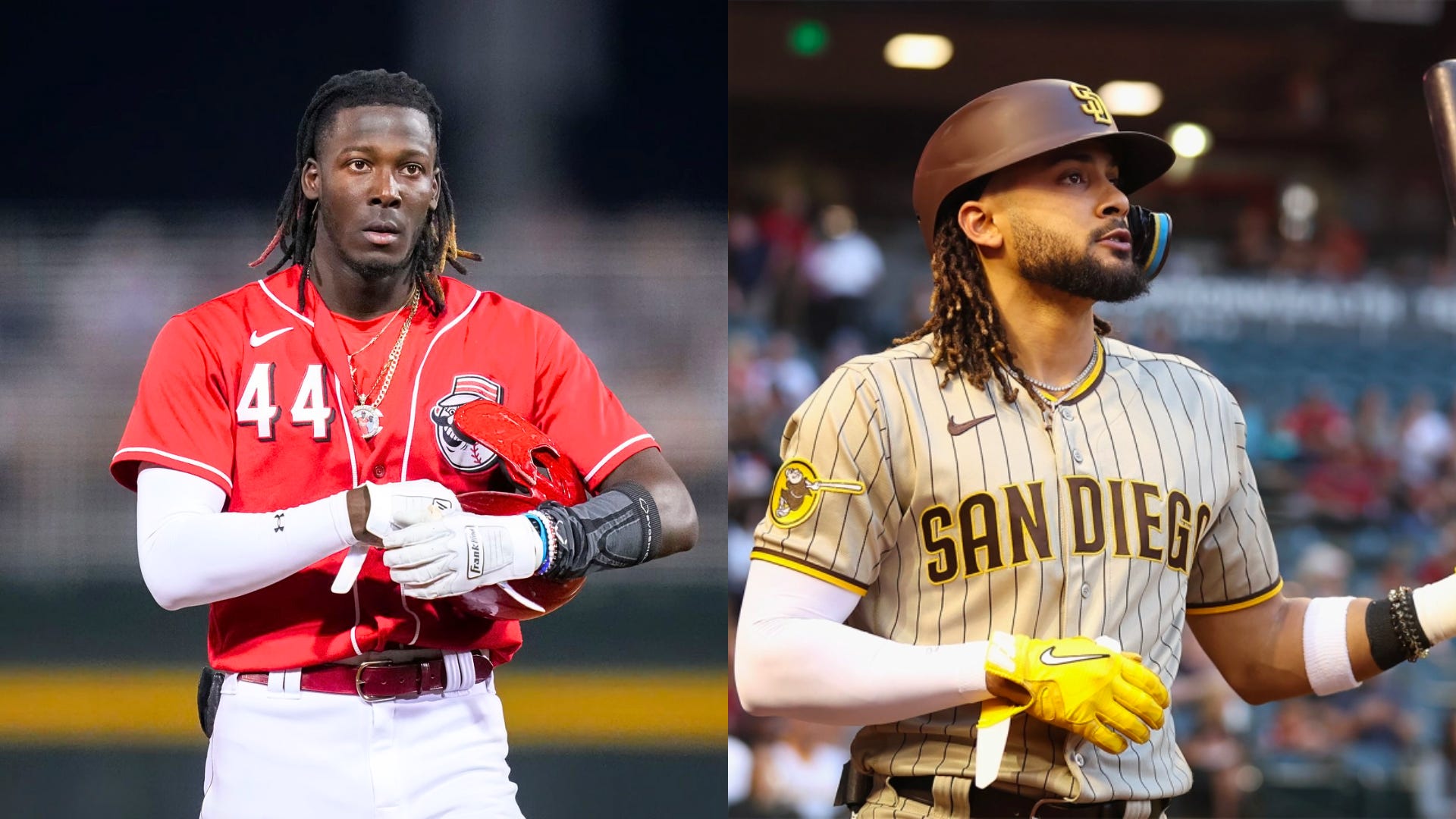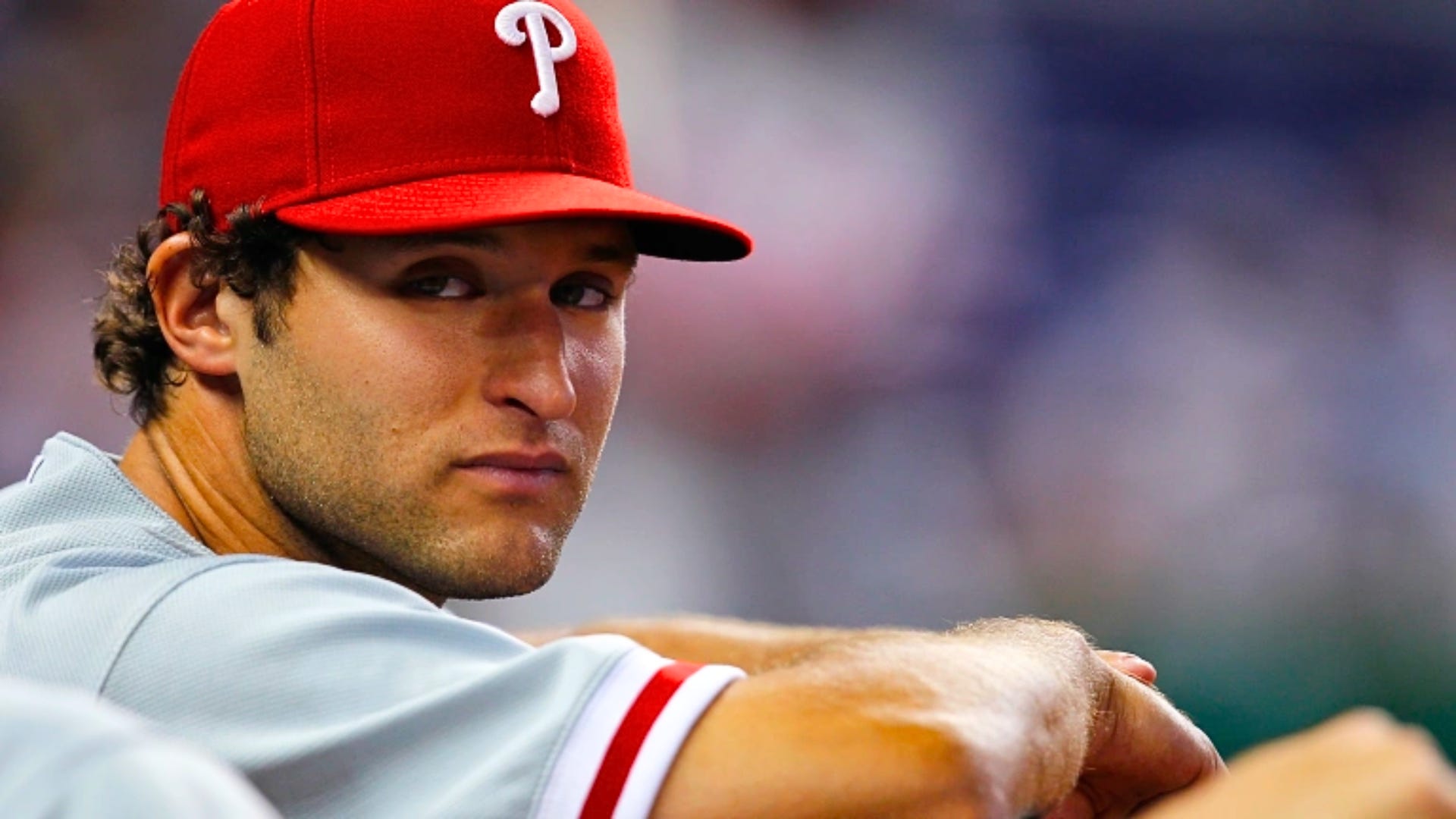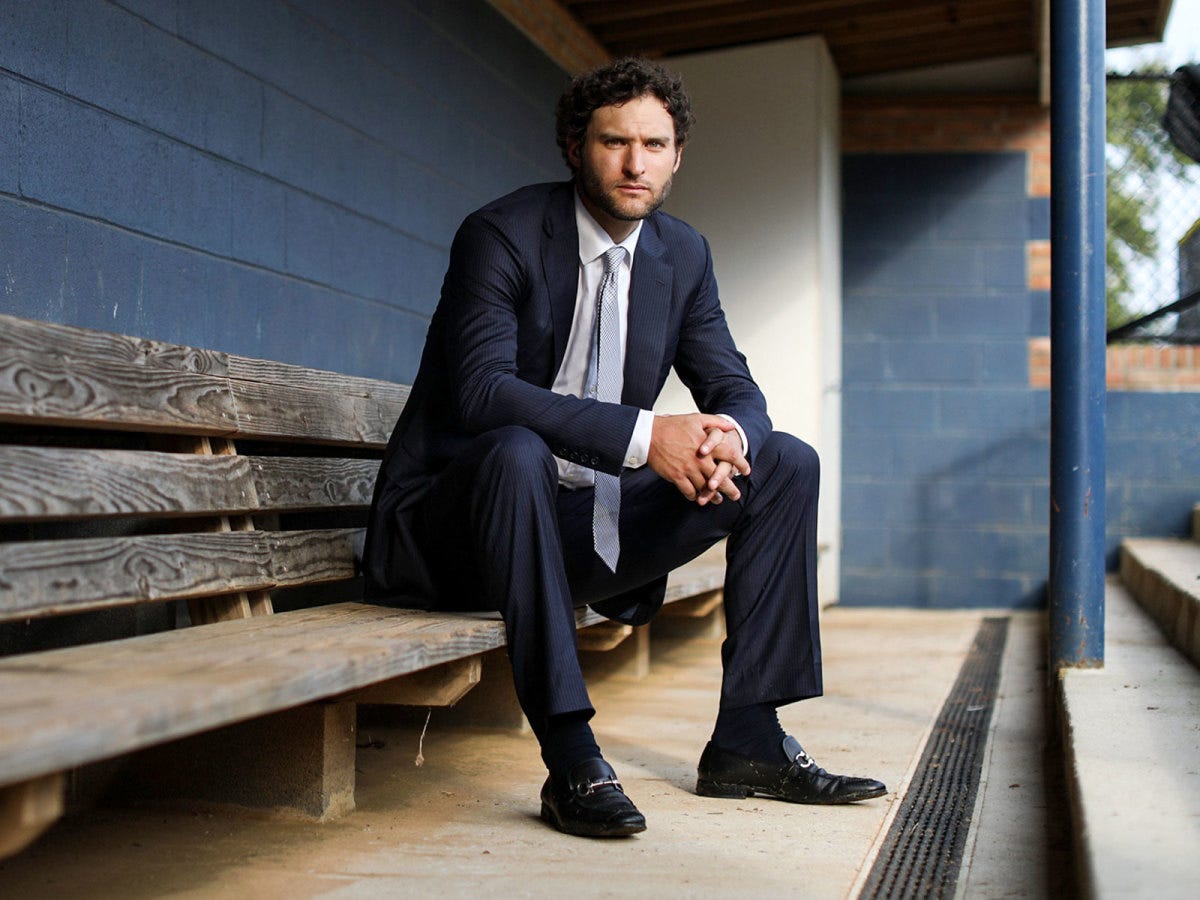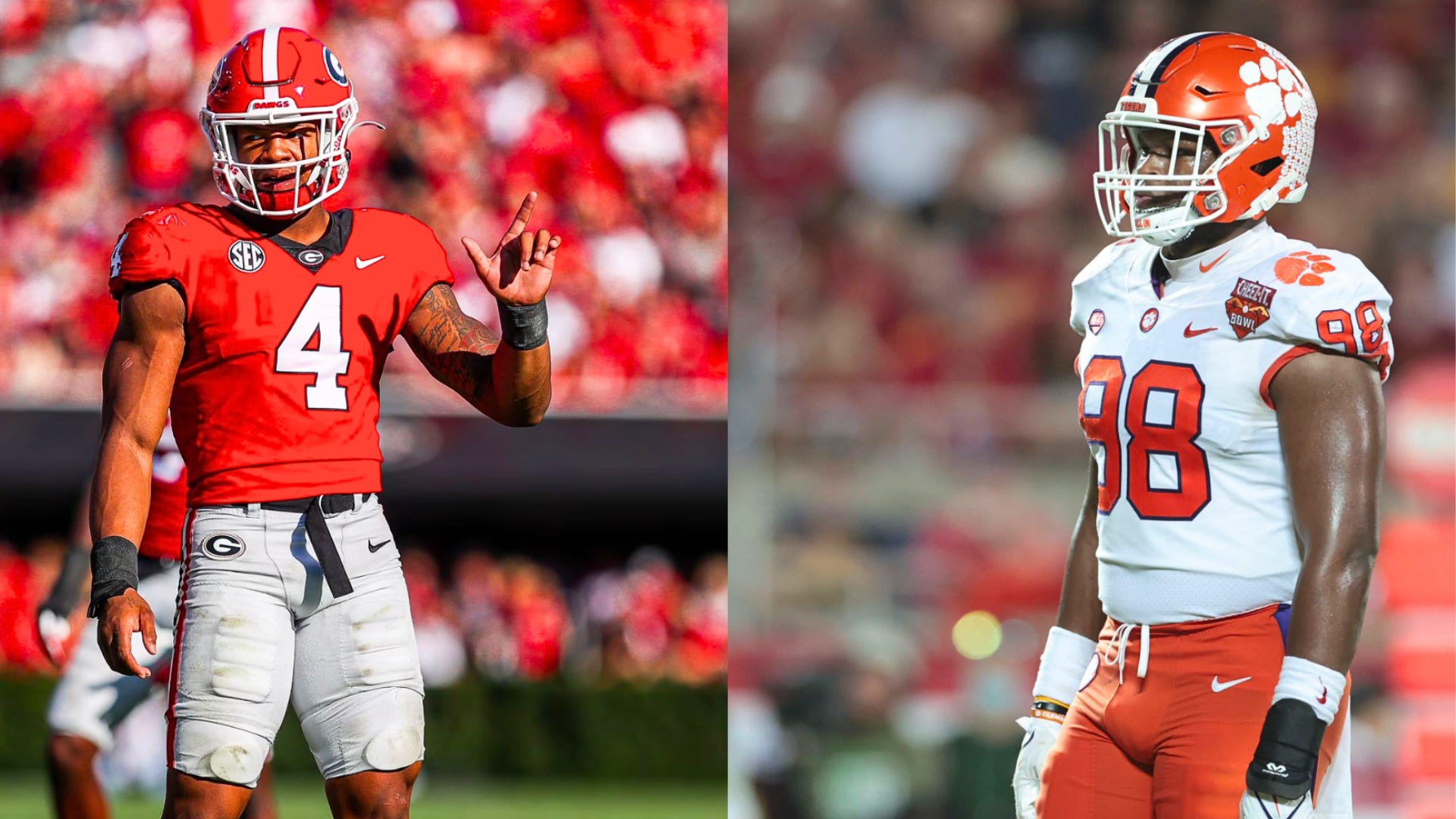The $400 Million Investment Fund That Gives Athletes Cash In Exchange For Future Earnings
Huddle Up is a 3x weekly newsletter that breaks down the business and money behind sports. If you are not already a subscriber, sign up and join 100,000+ others who receive it directly in their inbox each week. Today At A Glance:Big League Advantage is an investment firm that provides athletes with cash payments in exchange for a percentage of future earnings. The company has raised over $400 million and signed deals with several big-name athletes, so today’s email breaks down everything you need to know about how their business works. This newsletter is also available via podcast on Apple or Spotify. Enjoy! Today’s Newsletter Is Brought To You By SoFi!SoFi is the all-in-one finance app helping you bank, borrow, invest, and save. SoFi’s mission is to help members achieve financial independence and realize their ambition, all in one app. SoFi is transforming the industry and disrupting how the world sees personal finance, and it’s the single app you need to get your money right. I’m a SoFi member, and I love it. SoFi is legit, and they comply with the strict regulatory standards of the FDIC so you can be sure your money is safe. Friends, Elly De La Cruz is one of baseball’s most exciting prospects. The 21-year-old shortstop was signed out of the Dominican Republic for just $65,000 in 2018. But De La Cruz was recently called up to the major leagues after batting .304/.359/.586 with 31 doubles, 28 home runs, and 86 RBI last year. And he hasn’t disappointed, starting his MLB career with a 6-game hit streak and a 458-foot home run that left his bat at 114.8 mph and nearly exited Great American Ball Park. Put simply, De La Cruz is already a star. He hits the ball harder than anyone else; he is faster than anyone else; and he should make hundreds of millions of dollars playing professional baseball, barring injuries. But here’s the part you probably didn’t know: Elly De La Cruz signed a contract with a company called Big League Advantage in 2018, which provided him with a cash loan in exchange for 10% of EVERYTHING he makes on the field during his MLB career. And De La Cruz isn’t the only one. Big League Advantage (BLA) has agreements with several MLB all-stars, including Fernando Tatis Jr. and Jazz Chisholm Jr. And they work with multiple NFL players, too, like Myles Murphy (28th pick of the 2023 NFL Draft) and Nolan Smith (30th pick of the 2023 NFL Draft). But how does this model work? And is it even legal? Let’s dive in. The Big League Advantage story started in 2008. After a 4-year career at the University of Virginia, Michael Schwimer was drafted in the 14th round of the MLB Draft. Schwimer signed with the Philadelphia Phillies for just $5,000, playing six years of professional baseball — four in the minors and two in the major leagues. Michael Schwimer MLB Stats
But after retiring in 2013 due to season-ending shoulder surgery, Schwimer wasn’t sure what he wanted to do next. Sure, he had interned for a private equity firm in college and was pretty good with numbers. But he spent most of his time thinking about baseball and wanted to start his own business. So he fired up Excel and started gathering any data he could find. He didn’t know how he would raise money, hire employees, or even get clients. But he kept going until he found a statistical advantage, and that’s when Big League Advantage was born. The concept behind Big League Advantage is simple: pay minor league baseball players an upfront payment in exchange for a percentage of their future MLB earnings. “Players choose what percentage of their future career earnings they want to give BLA,” says the BLA policy on the company’s website. “For example, BLA may offer a player $50,000 for every 1% of his future professional earnings. If a player wanted to sign a deal for 5%, he would receive $250,000; if he wanted to sign a deal for 10%, he would receive $500,000. While our offer amounts are non-negotiable, the percentage the player would like to give up is decided by the player. The exact amount of money offered for each 1% of future professional earnings will vary.” And here’s what a typical BLA deal would look like:
So it’s a loan? Well, not really. Players must only pay money back to Big League Advantage if they make it to the major leagues. But if they never make it to “the show” and only play in the minor leagues, they never have to pay back a cent. This is because Big League Advantage runs on a business model more like a venture capital firm than a traditional bank. They have a team of 40 employees using proprietary predictive analytics models to try and find inefficiencies in the rankings, and they agree to 100+ deals each year, hoping that the winners can pay for the losers.
Of course, some of the ~100 players that accepted deals from BLA and made it to the majors only stayed for a cup of coffee and never made any real money. But that doesn’t matter because Big League Advantage focuses solely on landing the biggest fish. “If you invest in ten startups and one or two of them become Facebook or Google, you are doing well,” Schwimer frequently says. Take Fernando Tatis Jr, for example. He was one of 77 players that accepted a deal from Big League Advantage in 2017, agreeing to pay back ~8% of all future MLB earnings in exchange for an estimated $500,000 upfront cash payment. Tatis Jr had a $700,000 signing bonus with the White Sox, but he was just 17 at the time and only making about $10,000 a year in Single-A salary. So he accepted the deal and spent the money on a personal trainer, better food, and a better apartment. But fast forward to 2021, and Big League Advantage came calling. That’s because Tatis Jr agreed to a massive 14-year, $340 million deal with the San Diego Padres — and BLA’s ~8% cut of the deal meant that Tatis Jr owed them $27.2 million in earnings. “It’s really a testament to our modeling capabilities and how well we’ve been able to predict the success of minor leaguers,” Schwimer told the Associated Press. “When we did a deal with Fernando Tatis Jr., he wasn’t a top 50 prospect on anybody’s list. And here our numbers said he was the second-best player in the last 15 years, including Mike Trout, (Bryce) Harper, and all these guys. That’s what our modeling told us. It was actually a really scary thing investing the amount of money we invested in it. It was a sizable portion of our fund. But at the end of the day, we decided to trust the numbers and trust the process, and it really, really worked out.” And here’s the craziest part: Big League Advantage invested $26 million across 77 players out of its first fund, so Tatis Jr’s $500,000 check represented just 2% of the deployed capital. But with Tatis Jr returning $27.2 million to Big League Advantage, the company’s entire fund was covered, and the remaining 76 players were gravy. Big League Advantage’s early success has led to increased interest. This has enabled the investment firm to raise two additional funds — $130 million and $250 million — and they have also added some very reputable investors to the company’s cap table. BLA Funding History
Notable BLA Investors
And Big League Advantage isn’t just using this additional capital to double down on its minor league baseball investment strategy. Instead, they are venturing into new lines of business, like NIL deals with college football and basketball players. This past year, for example, Big League Advantage signed NIL deals with Clemson defensive end Myles Murphy and Georgia outside linebacker Nolan Smith. Both players received a cash payment in exchange for 1% to 10% of their future NFL earnings. They were required to have a lawyer present to review the contract before signing. And since it’s part of a NIL deal, the players also agreed (by contract) to one social media post per month, two player appearances, and two content shoots. And with both of these players going in the first round of this year’s NFL Draft — Myles Murphy 28th overall and Nolan Smith 30th overall — they are set to owe Big League Advantage between $120,000 (1%) to $1.2 million (10%) on their rookie deals alone. Notable BLA athletes with estimated BLA deal cut (ranges based off 1% to 10% if the agreement is unknown)*
But just because Big League Advantage seems to be making a decent return for its investors, that doesn’t mean everyone is happy with how they run their business. MLB super agent Scott Boras has accused Big League Advantage of intentionally targeting talented players from Latin America who don’t receive large signing bonuses. “Few, if any, top American talents who received large signing bonuses would ever consider the usurious terms,” Boras told the Associated Press. “The idea of giving millions in lump sums to players is the justification of candy used to attract and compel players to give up huge percentages of their careers. That solely benefits BLA.” And MLB catcher Francisco Mejía even sued Big League Advantage in 2018, claiming the firm took advantage of his financial illiteracy, desperation (he wanted cash to fund medical treatment for his mom in the Dominican Republic), and youth when he signed an agreement at 20 years old that exchanged 10% of his future MLB earnings for $360,000 in cash.
Although Mejía later dropped the lawsuit and issued an apology, stating, “I do not believe Big League Advantage has ever deceived me. All of my interactions with Big League Advantage, and specifically Michael Schwimer, have been very professional and respectful. I believe that Big League Advantage offers a great option for all minor league players, and one that worked for me and helped me focus on baseball and fulfill my dream of reaching the major leagues … I apologize to BLA for filing the complaint.” But where does this go from here? On the one hand, Big League Advantage and its investors say these deals aren’t predatory because the firm requires independent lawyers to review each deal, and 70-80% of players never have to pay back any money. But on the other hand, you have players like Fernando Tatis Jr., who ended up accepting a ~$500,000 payment in exchange for $27.2 million in future earnings. One solution, of course, is to increase wages so these types of deals aren’t necessary. And Major League Baseball has started to move in that direction, doubling pay across the minor leagues this season and updating housing and transportation options. But with the average minor league baseball player still earning under $30,000 annually, Major League Baseball still has a long way to go before players aren’t dependent on signing bonuses or outside funding like revenue-sharing agreements. And remember, this problem doesn’t just exist in baseball. Businesses, family, friends, and wealthy patrons routinely invest in young golfers for a percentage of future earnings, and boxing has spent decades dealing with shady speculative investing. But that doesn’t mean a better solution doesn’t exist; we just have to find it. If you enjoyed this breakdown, please consider sharing it with your friends. My team and I work hard to consistently create quality content, and every new subscriber helps. I hope everyone has a great day. We’ll talk on Friday. Listen to the Joe Pomp Show on Apple or Spotify. Interested in advertising with Huddle Up? Email me. Your feedback helps me improve Huddle Up. How did you like today’s post? Loved | Great | Good | Meh | Bad Huddle Up is a 3x weekly newsletter that breaks down the business and money behind sports. If you are not already a subscriber, sign up and join 100,000+ others who receive it directly in their inbox each week.
© 2023 |





